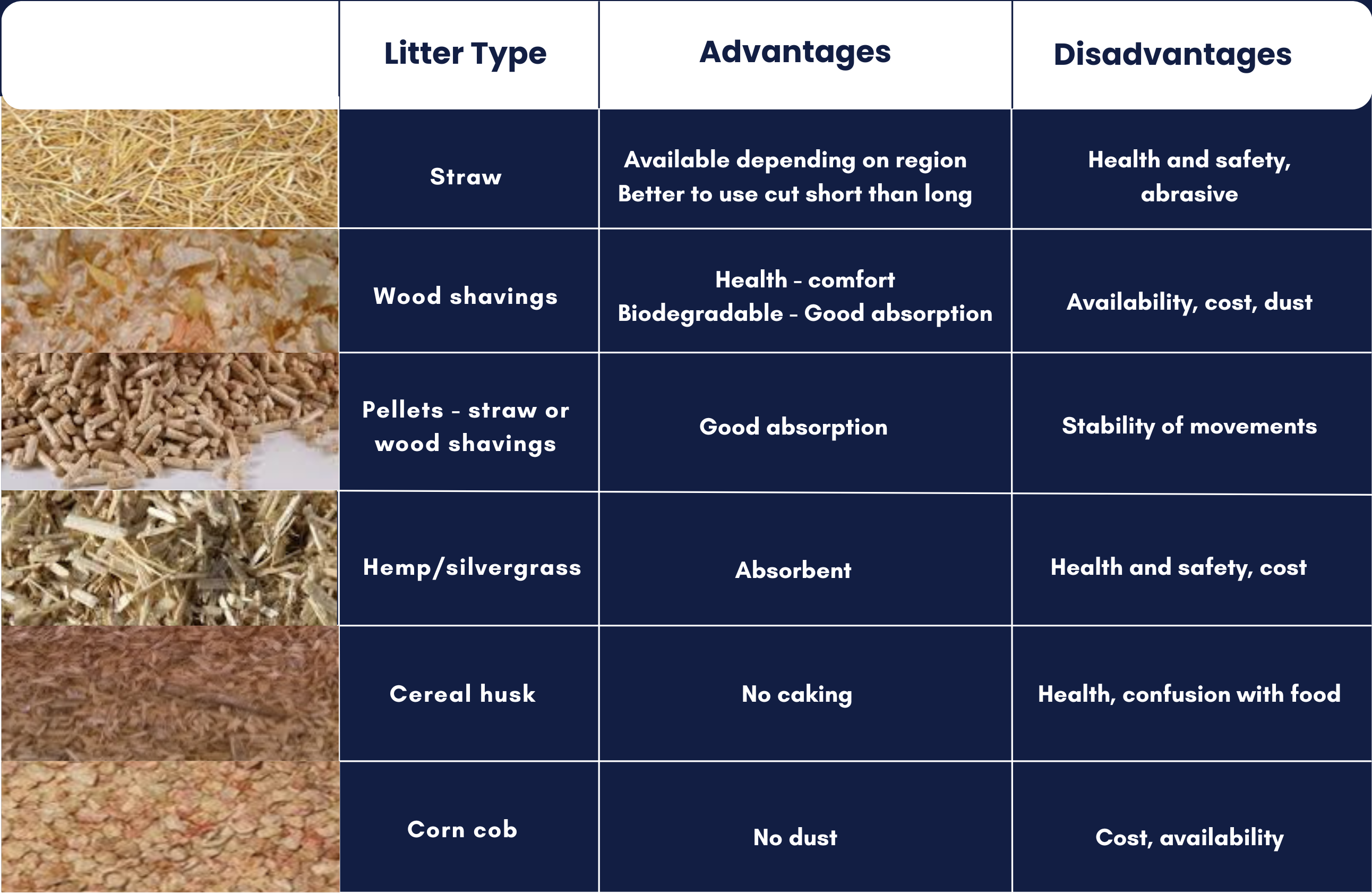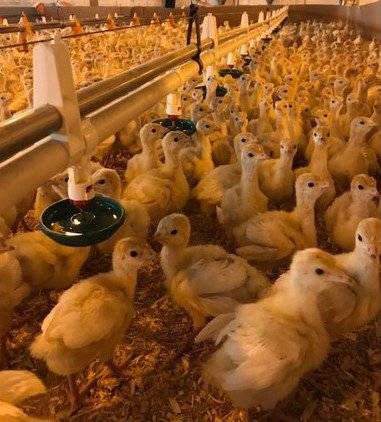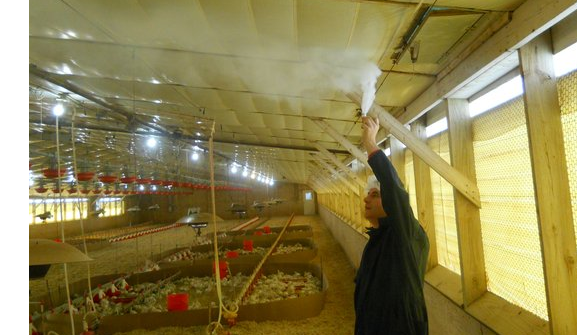
Published on May 7, 2025
Litter Management 101: Key Practices for Healthy Flocks
Litter management can impact bird health, productivity, feed consumption and growth. Read on to get a full overview of key contributing factors and mitigation strategies.
Turkeys require a clean, well-managed environment to reach their full potential. Good litter quality and management is an important component of successful turkey production. Litter acts as a sponge, but it has limited moisture-holding capacity. If birds constantly add moisture to the sponge, the moisture builds up and can become extremely saturated and wet. Poor litter quality can contribute to respiratory issues, footpad dermatitis, and overall health and welfare. With footpad and leg pain, this causes lower activity for the birds as well as lower feed consumption and growth.
Factors Affecting Litter Quality – Set Up
The choice of litter in your barn can affect moisture absorption, insulation, cost, and ease of management. Below are some common litter types with various advantages and disadvantages.

Proper litter depth provides thermal insulation and moisture buffering. For turkeys, a depth of 3 to 5 inches (7 to 12 cm ) is typical at placement, depending on climate and facility conditions.
Best practices:
- Evenly spread litter across the floor
- Pre-heat houses 24–48 hours before bird placement. 48 hours is optimal in extremely cold conditions. You can also pre-heat the building before spreading the litter depending on your process.
- During the life of the flock, regularly check the depth and quality of litter. It's preferable to till the litter as opposed to adding more, but you can also apply top dressing depending on litter condition.
Feeder & Drinker Set Up
How drinkers are managed can have a huge impact on the litter quality in the barn. Drinkers should have the appropriate height and water pressure so the turkeys can easily dip their beak in the water. Water lines should also be well maintained and not leaking.

Gut Health
Good gut health in turkeys is a key factor in their overall resistance to disease and performance. A healthy gut allows the turkeys to digest and absorb nutrients properly leading to fewer issues with litter quality. Careful attention after poult placement is the biggest contributor to a healthy gut. After placement, poults need to start eating and drinking as soon as possible, which establishes good gut health from the start. Clean sanitized water is another important factor in good gut health. Read more about the role of feed and water in brooding and an overview of water sanitation programs.
There are a number of health challenges that can impact your turkeys' digestion. Consult your veterinarian or nutritionist to get a specialized recommendation.
Ventilation & Humidity
For every 1 lb (0.5 kgs ) of feed intake, a bird will drink approximately 2 liters (0 .91 kgs) of water. Approximately 80% of that water consumed ends up in the litter or in the air. This moisture must be removed from the barn in order to maintain dry litter and acceptable humidity levels. Proper ventilation can accomplish this, and do so, without chilling the birds or wasting fuel.
No matter the time of year, good ventilation is the only good solution for removing moisture from the barn and the litter. Running fans, in conjunction with the use of inlets, within the barn creates a water pump system to remove moisture. The timing of your fan will differ depending on the size and power of your fan, the number of inlets, density and age of the flock.
In cold weather, utilize minimum ventilation to mix and circulate air throughout the barn (Read more here). In warm weather, tunnel ventilation can be used to maintain proper ventilation. Air enters at one end of a poultry barn and is exhausted by ventilation fans at the other end. The exhaust fans pull air out of the barn, creating a negative pressure as air enters inlets at the opposite end. (Read more here).
Noticing early when the humidity in the barn is too high will help prevent litter from caking, which is the most effective method when maintaining litter conditions.

Mitigation strategies
If litter is already caked, you can apply top dressing, remove cakes, till the litter, and look at adapting your ventilation/heating. The higher your density, the less room for error when preventing excessive moisture.
Managing litter in turkey barns takes ongoing effort and attention. Keeping the litter dry will help keep your turkeys healthy and growing well. Good airflow, proper water system management, and regular checks on litter condition are all important for long-term success.



